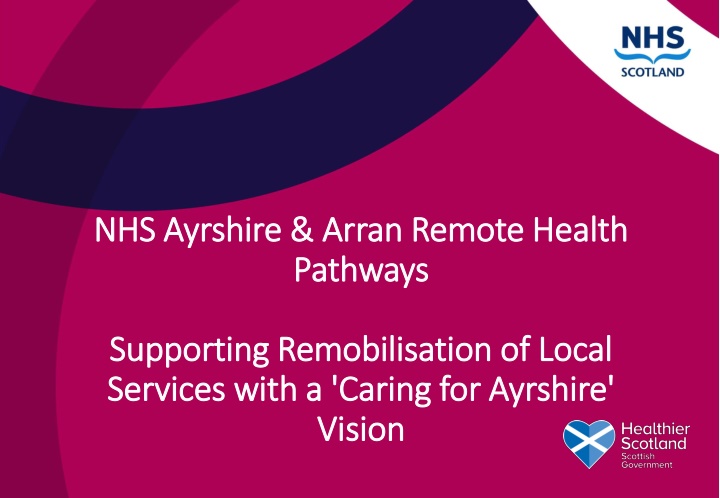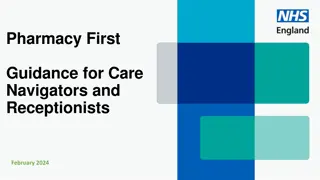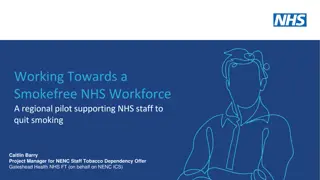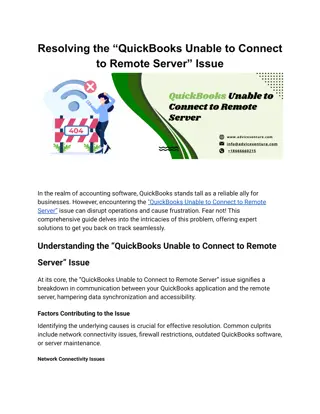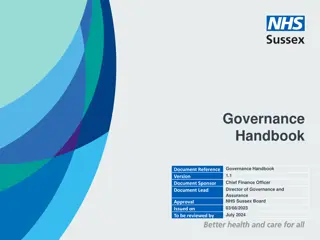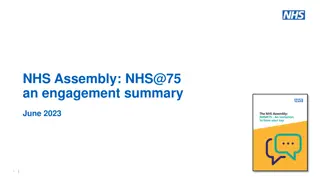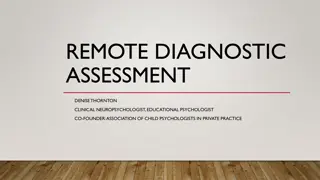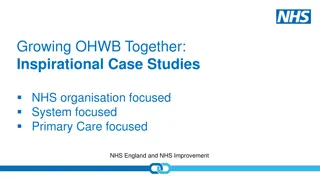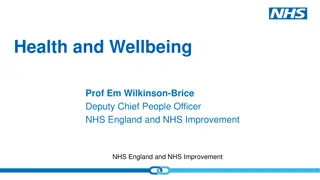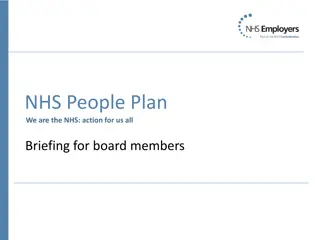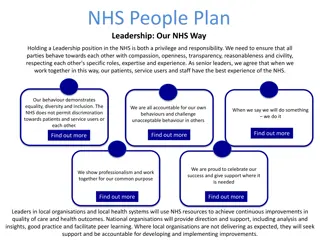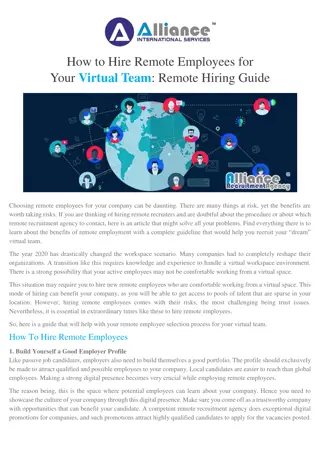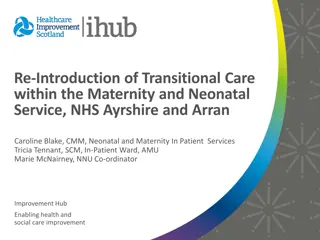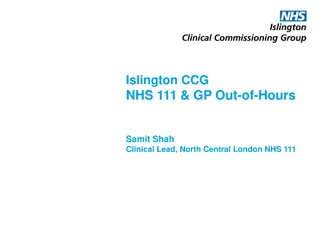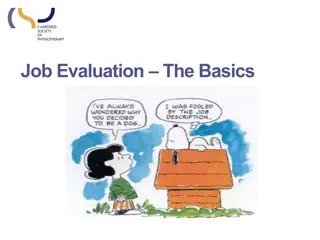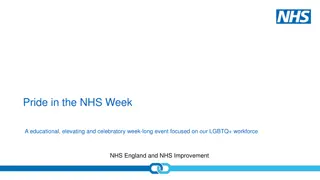Remote Health Pathways in NHS Ayrshire & Arran
In NHS Ayrshire & Arran, the focus is on developing remote health pathways to address unmet patient needs and relieve workforce and system pressure. The 'Caring for Ayrshire' vision emphasizes delivering care close to home with access to high-quality specialist services when needed. Initiatives include asthma, COPD, hypertension monitoring, and more. Primary care pathways are being implemented to support conditions like asthma, COPD, depression, and epilepsy. Citizen engagement plays a crucial role in shaping service design. Examples include self-management plans for patients and connectors like Sally Wilkes in East Ayrshire HSCP.
Download Presentation

Please find below an Image/Link to download the presentation.
The content on the website is provided AS IS for your information and personal use only. It may not be sold, licensed, or shared on other websites without obtaining consent from the author.If you encounter any issues during the download, it is possible that the publisher has removed the file from their server.
You are allowed to download the files provided on this website for personal or commercial use, subject to the condition that they are used lawfully. All files are the property of their respective owners.
The content on the website is provided AS IS for your information and personal use only. It may not be sold, licensed, or shared on other websites without obtaining consent from the author.
E N D
Presentation Transcript
NHS Ayrshire & Arran Remote Health NHS Ayrshire & Arran Remote Health Pathways Pathways Supporting Remobilisation of Local Supporting Remobilisation of Local Services with a 'Caring for Ayrshire' Services with a 'Caring for Ayrshire' Vision Vision
Dr Alexia Pellowe Clinical Lead for Remote Health Monitoring, NHSA&A TEC Team Associate Advisor for Quality Improvement Patient Safety and CPD, NHS Education for Scotland Clinical Lead for TECpathfinders, East Ayrshire HSCP
TEC/Remote Health Pathways in NHS Ayrshire & Arran Why? Unmet Patient Needs Workforce and system pressure Future Tsunami?
The Caring for Ayrshire Vision: Care shall be delivered as close to home as possible, supported by a network of community services with safe, effective and timely access to high quality specialist services for those whose needs cannot be met in the community. TEC
Remote Health Pathways in development Nationally Covid-19 Asthma secondary care COPD secondary care Hypertension Locally Heart Failure Monitoring Newly diagnosed COPD supported self management PSA monitoring in prostate cancer Paediatric IBD Renal monitoring
Primary Care Pathways Phase 1 Asthma COPD Depression Epilepsy Phase 2 Multiple Longterm Condition Reviews
Citizen Engagement: Model for Improvement or Scottish Approach to Service Design? Would like a self-management plan for my daughter and myself so we both know how to treat exacerbations. All the information is still on my phone. I think it will give me more confidence to self-manage. There is a lot of reading that I have now and I ll keep referring back to it. Freetext box to ask the practice for 2 months on repeat
Sally Wilkes TEC Connector East Ayrshire HSCPOutput example
How we did it: 2. Engaging Key Stakeholders 1. Building the Team 4. Getting Buy in 3. Setting the Vision
Holding slide Dr Simon Farrell video 1 getting engagement and iterative feedback loop in design
Engaging Key Clinical Stakeholders GP Practices GP Stakeholders Local Medical Committee GP Sub-committee Associate Medical Director CTAC Lead Speciality Lead
Setting the Vision: QOF What matters to you WHAT DOES GOOD LOOK LIKE IMPROVE CODING A.I TIME FOR MEANINGFUL CONVERSATIONS RIGHT PERSON, RIGHT PLACE, LESS TIME? ASYNCHRONOUS FRAMEWORK
Holding slide Demo video of the pathway
Docman EDT Alerts Codes Data
Dr Simon Farrell Video 2 re why CfA local pathways v alternatives
Implementation plan Pilot Practices Share Evaluations Standardise Processes Iterative design around patient feedback Phase 1: Asthma Depression COPD Epilepsy Caring for Ayrshire Vision (As part of CAG for National TEC Team) Phase 2: Multiple LTC
Connects people to local support groups Supported to know when to seek medical help Complementary TEC for Supported Self Management Long Term Condition Diagnosed Practice Recall Patient can access up to date health education Appropriate signposting to local services Collect patient LTC data remotely Risk scores calculated by algorithms Opt in to TEC TEC connector Results arrive direct into practice IT systems What matters to me conversation with most appropriate person Algorithms to ensure RPRPRT Clinical review as appropriate House of care
What might the future look like? Improved patient choice Smart A.I. Time for meaningful conversations Earlier detection and intervention Move towards House of care Prevention of LTC and consequences Saves time away from work or caring responsibilities TECconnectors LTC Group consultations
Any Questions? Any Questions?
